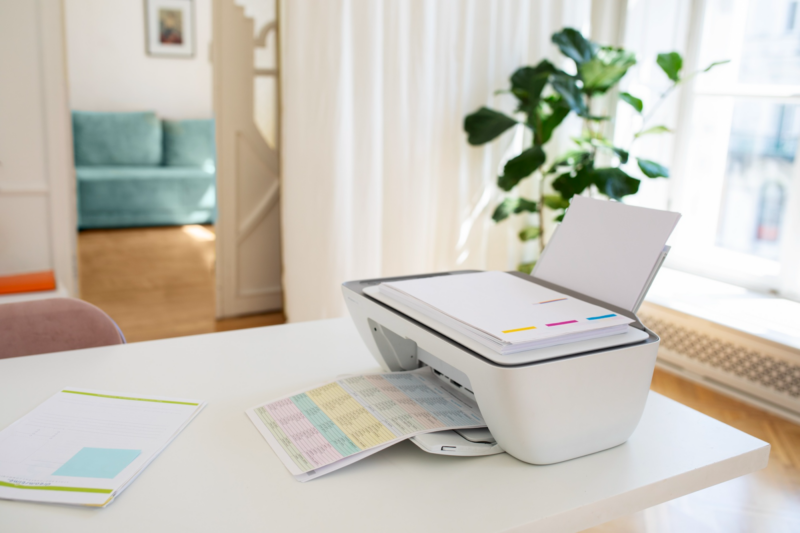
In a world increasingly aware of environmental issues, how can we make our office printing habits more eco-friendly while complying with necessary regulations? It’s a question that many UK businesses are grappling with, and the solution lies in a blend of strategic planning and practical changes to deliver more eco-friendly office printing.
Understanding the Challenge
Before we explore solutions, let’s ask ourselves: Why is eco-friendly printing important? The answer is simple – reducing waste and energy consumption not only helps our planet but also often leads to cost savings. But how do we achieve this without compromising on legal compliance and document quality?
Core Strategies for Eco-Friendly Office Printing
Double-Sided Printing: An Easy Start
Setting double-sided printing as the default in your office is a no-brainer. This simple change can reduce your paper consumption by half. It’s an effortless way to make a big difference.
Toning Down Toner Usage
Encouraging the use of ‘draft’ print quality for everyday documents is a smart move. Not only does it save on ink or toner, but it also extends the life of your cartridges. Moreover, consider printer software with eco-modes – these are designed for lighter, less ink-intensive printouts.
Paper: The Backbone of Printing
The choice of paper is crucial. Opting for recycled paper, particularly those with high post-consumer waste content, is a step in the right direction. Using lighter-weight paper stocks and smaller font sizes (while keeping them readable) can also contribute to substantial paper savings.
Recycling: Closing the Loop
Implementing effective recycling strategies for paper and used ink or toner cartridges is essential. And for old or broken electronics, working with an e-waste recycler ensures safe and responsible disposal.
Compliance: A Balancing Act
Protecting Data in Print
When disposing of sensitive documents, cross-cut shredders or professional services are a must to comply with regulations like GDPR. If you’re outsourcing printing, make sure the print shop has stringent data protection policies.
Keeping Records Right
Stay informed about how long different documents need to be retained according to HMRC guidelines. Secure destruction of documents past their retention period is just as important as storing them.
Efficient Record Keeping
Moving towards electronic, cloud-based document management can drastically reduce printing needs. It’s secure, accessible, and in line with modern digital practices.
Going the Extra Mile
Choosing the Right Printer
Energy-efficient printers, marked with labels like “Energy Star” or “EPEAT”, are worth considering. Sometimes, less is more – reducing the number of printers in the office can cut down on energy usage.
Sustainable Suppliers
Choose suppliers with environmental solid credentials like FSC or Blue Angel certifications. Also, explore print shops that are dedicated to eco-friendly practices.
Engaging Employees
Setting clear guidelines for eco-friendly printing and initiating internal green challenges can foster a culture of environmental responsibility.
Additional Considerations
Embracing Remote Work
Remote work inherently reduces office printing – a win-win for the environment and flexibility.
Smart Print Management
Software for tracking and optimising printer use can identify areas for improvement, ensuring efficient and responsible printing practices.
Resources to Help You
– Forest Stewardship Council (FSC)
– [https://www.thegreenoffice.co.uk/
Or give us a call at Evolve, and we’ll be happy to discuss.
The Bottom Line?
Every small step towards eco-friendly printing contributes to a more significant, positive impact over time. By adopting these strategies, not only do you align with sustainable goals, but you also ensure compliance with all relevant regulations.
Remember, it’s about making informed choices and encouraging a cultural shift towards sustainability in the workplace. Let’s make our printing practices a part of our commitment to a greener future.
